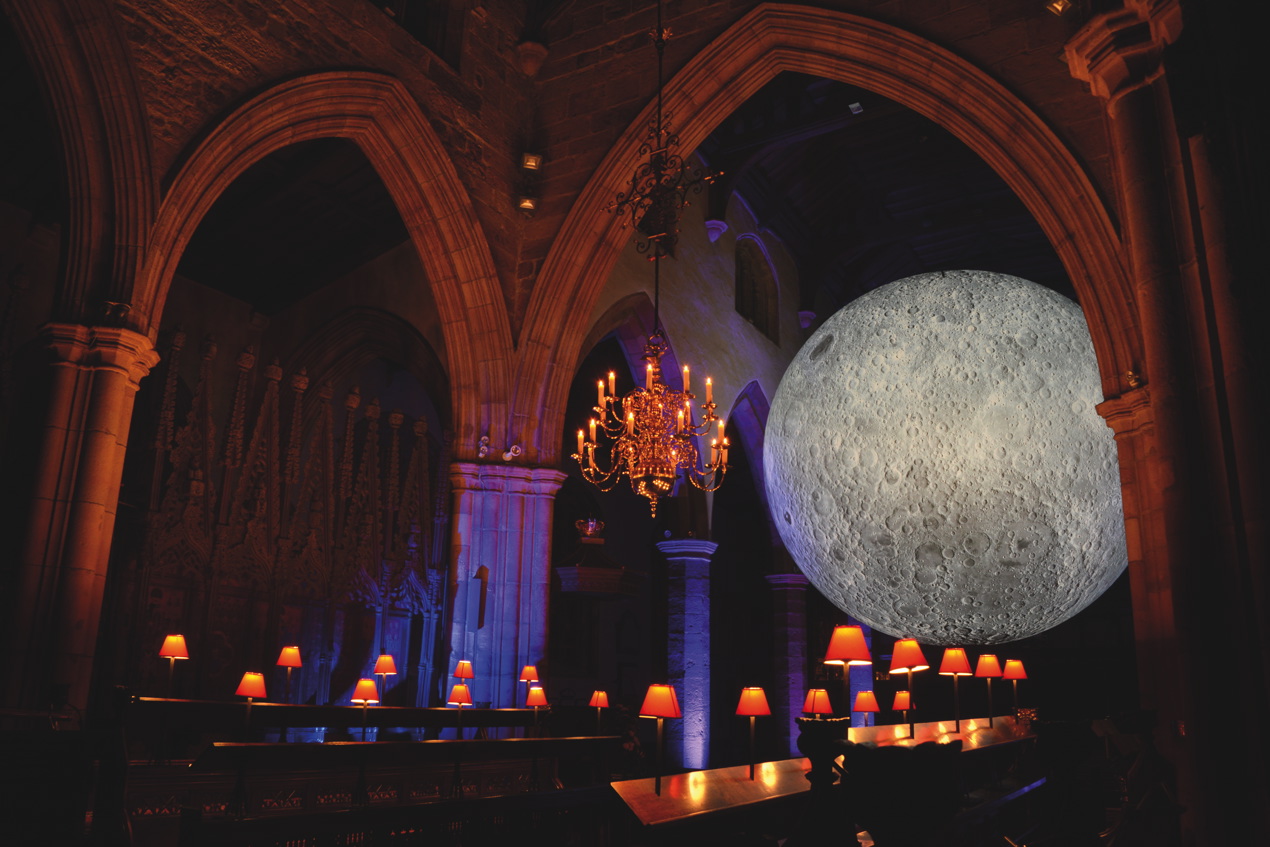In the frame: the Moon
From Galileo’s watercolours to Luke Jerram’s giant balloon sculpture, the Moon has influenced artists through the ages
Across ages and continents humans have been fascinated by the Moon and it’s been a preoccupation of scientists and artists alike. At 200,000 miles away the Moon is our closest celestial neighbour and its only natural satellite. It’s a symbol of femininity, of humanity’s scientific ability, of nature, magic and mythology. Omnipresent and yet unknowable, it rules our calendar and our tides – and though it means something different in every culture it connects us all, even in times of separation.
Moon Drawing
Galileo Galelei (1609)
The celebrated Italian astronomer and philosopher was also a trained painter and produced this famous set of six watercolours. They show the Moon in its various phases as he observed it through a telescope in the autumn of 1609. These little paintings are the first realistic depiction of the Moon in history, although the oldest image of it ever discovered predates it by a few thousand years – the Bronze Age Nebra Sky Disc (1600 BC).
The Moon
John Russell (1787)
Russell was the most famous pastel portrait artist of his time but although by day he would intricately portray the features of high society, by night he turned his attentions to the Moon. Russell reportedly spent about six hours a night for 20 years depicting his muse. This picture shows the Moon on the second night after the first quarter – the night he loved it best because of the contrast between shadow and light.
I Want! I Want!
William Blake (1793)
This little engraving is smaller than a playing card and shows a child’s wish to visit the Moon. It would be nearly two centuries before anyone figured out how to get there and it wasn’t on a ladder. The fantasy of living on the Moon isn’t one that abated with the Moon landing, though the meaning may have evolved over time. An illustration by children’s author Oliver Jeffers in 2019 showed an identical concept but in that case it was a man “wary of the world” who wished to move to the Moon.
Jade Rabbit: Sun Wukong, the Monkey King from one Hundred Aspects of the Moon
Taiso Yoshitoshi (1889)
This is one of 100 prints featuring the Moon made by this Japanese artist Yoshitoshi. The woodblock prints often show stories from Chinese and Japanese folklore and include elements of the supernatural. This one refers to a Chinese story of an immortal monkey king, shown dancing with a jewelled hare that, according to legend, lives on the Moon. In the same year in southern France, Van Gogh painted his famous Starry Night, observed from his window from a lunatic asylum where he stayed for a year after notoriously cutting off his own ear. The word “lunatic” derives from the word “lunar”, and a full moon has long been associated with strange human as well as supernatural behaviour. Van Gogh paints a waning crescent moon however.
Museum of the Moon (main image)
Luke Jerram (2016)
This touring light and audio installation looks so realistic that one little girl asked the artist if he was going to put the Moon back afterwards. Internally lit and accompanied by a sound composition, the sculpture is actually a giant balloon, printed with detailed Nasa imagery at a scale of 1:500,000 and made in a hot air balloon factory.

Leave a reply
Your email address will not be published.